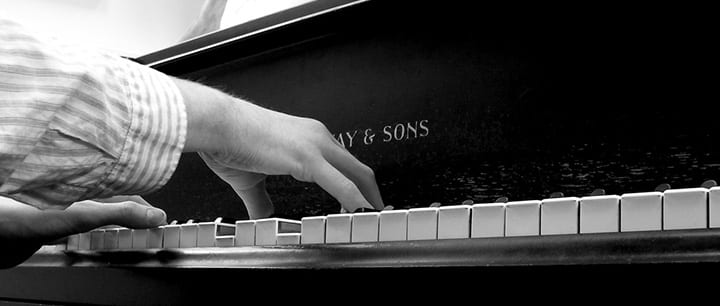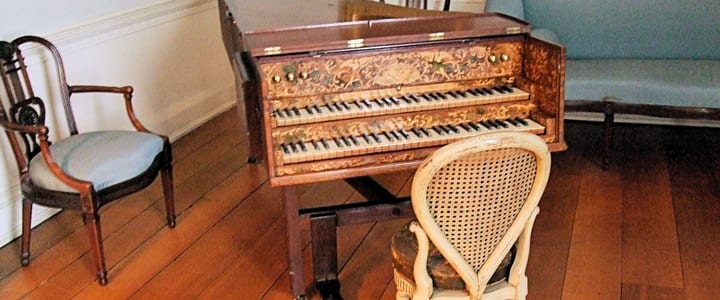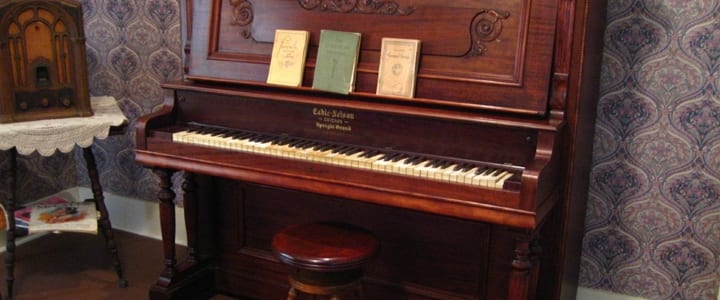 Whether you are just starting out or are a more experienced pianist, you may have wondered about the evolution and history of the piano. You might be surprised to learn that although the modern piano is over 300 years old, its look and design has remained largely unchanged over the years.
Whether you are just starting out or are a more experienced pianist, you may have wondered about the evolution and history of the piano. You might be surprised to learn that although the modern piano is over 300 years old, its look and design has remained largely unchanged over the years.
The History of the Piano
The piano is an amazing stringed instrument that uses percussion to create a full, resonating sound. Italian harpsichord maker Bartolomeo di Francesco Cristofori (1655-1731) invented the first piano around the year 1700. Without him, you’d likely be considering either harpsichord or organ lessons instead of dreaming of learning to play the piano.
Cristofori’s first piano was actually called a “pianoforte,” and borrowed quite a bit of its look and design from the harpsichord — which makes sense, since he was a harpsichord maker. Over the years, the designers learned to utilize better materials, but the basic inner workings have stayed pretty much the same.
The Piano’s Older Cousin – The Harpsichord
The harpsichord is visually similar to the piano. They are both string instruments with wooden cases, but the harpsichord has two or more sets of strings inside the case, and two keyboards.
When playing a harpsichord, you press down on a key, causing a “plectrum” to pluck the strings inside the case. No matter how hard or softly you press the keys, the sound produced will be the same.
The Pianoforte Makes its Debut
In Italian, pianoforte translates to “soft loud.” The sounds produced by Cristofori’s pianoforte were an extension of what the harpsichord could do. While similar in looks, the pianoforte was much different inside.
Instead of a plectrum plucking the strings, the pianoforte used a hammer to strike them. This allowed the player to control not only the volume and intensity of the sound produced, but also the length of the sound.
The pianoforte became a favorite among musicians because they could express more emotion through the instrument than with the harpsichord.
Modern Pianos Make Their Mark in Piano History
With a full seven octaves represented, the modern piano features 88 keys, made of ivory or plastic, with wool-covered hammers and cast iron frames able to withstand higher levels of tension on the strings. But before then, the instrument had a few periods of evolution:
-
Square Piano – Initially designed in France in 1777 by Sébastien Érard, the square piano wasn’t square at all. It was actually rectangular, with the strings running horizontally along the keyboard. Johann Christoph Zumpe and other German piano designers improved on the square piano design and by the mid-1800s, it was commonly used to play salon music throughout Europe.
-
Upright piano – During the mid-1800s, upright pianos began to replace square pianos throughout the world. The strings of an upright piano ran vertically, perpendicular to the keyboard, which initially made them very tall. John Isaac Hawkins, an English piano maker who lived in Philadelphia, improved the upright design by bringing the strings down to the floor level, instead of having them begin at the keyboard. Due to their original height, older uprights often incorporated elegant designs, but they required quite a bit more space than modern uprights. Less expensive than a traditional grand piano, modern uprights take up much less space than grand pianos, making them popular in schools and homes.
-
Grand Pianos – From the four-and-a-half-foot small grand to the much larger eight- or 11-foot concert grand, the classic look of the grand piano has remained almost unchanged over the years. The strings run horizontally, perpendicular to the keyboard. Prop open the lid and the grand piano offers unparalleled sound quality that is favored for concerts and large performances. In general, the larger the grand piano, the longer the strings and the greater the timbre or sound quality it produces.
-
Digital Pianos – The current digital age brought technology together with the piano to create electric pianos and digital keyboards. From the first inception in 1946 until now, these instruments have come a long way. Modern electric pianos are purely electronic instruments that have high-quality recorded sounds on an internal hard drive. The keys are often weighted to replicate the feel of playing a traditional acoustic piano.
So there you have it! We hope you enjoyed this brief history of the piano.
Over the last 300 years, the piano has entranced musicians throughout the world. Curious about other fun facts about the piano? Check out our infographic here.
Want to learn how to play the piano? Browse our piano teachers and find one in your area or online to guide you along the way!
Photos by alexanderward12, Jim Linwood, Charleen Mullenweg
Suzy S.


